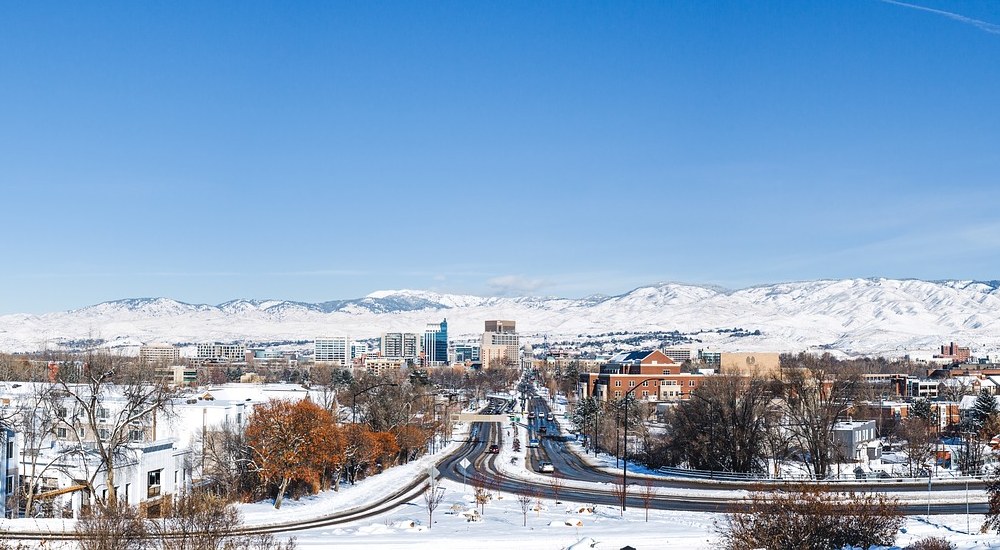

Following an Indexer story on the movement of Californians to Idaho, the New York Times ran a story about Boise, with the head “The Californians Are Coming. So Is Their Housing Crisis.”
The subhead asked the question: “Is it possible to import growth without also importing housing problems?” Lauren McLean, mayor of Boise, responded “I can’t point to a city that has done it right.”
Mayor McLean would not have trouble finding examples of places with both strong growth and affordable housing. Atlanta has grown rapidly and yet has had flat housing prices. Ditto Houston, Phoenix and Dallas for much of their recent history.
But, Yuk! We don’t want to be like those big, sprawling Sunbelt cities! And that is exactly the point. Housing costs are, in many respects, about choices, not inevitabilities.
So, by a failure to “do it right” the Boise mayor may have been suggesting that no city has figured out how to have strong income growth and affordable housing while not turning into a sprawling megalopolis. On that point she would be correct. Not because it hasn’t been done, but because it really cannot be done on a sustained basis.
It’s all about what urban economists call “spatial equilibrium.” The Indexer introduced this subject in a pair of articles (here and here) that described the cost of amenities in urban areas. Now, let’s take the same idea and apply it to housing costs.
We start with a foundational theory from urban economics: the Rosen-Roback framework. In its simplest form, it says:
W + A – C = U
Where W is wages, A is amenities/quality of life, and C is the cost of housing plus commuting. The net of these factors is U, utility, which simply means the total value a person gets from living in a place.
Now get ready for this: U is the same everywhere over the long term. The utility of Santa Barbara or Honolulu is the same as the utility of a threadbare town with a shuttered mill and an abandoned downtown. But if we play with the numbers, this makes sense. In a wealthy, attractive place like Seattle, high wages and amenities are offset by high costs. In a depressed place, low wages and amenities are offset by low costs.
We end up gravitating to the place that offers the combination of employment opportunities, amenities and costs that reflects what we find important in our lives.
W, A and C change all the time, which causes U to fluctuate in the short term. Wages rise or fall with new or declining industries. Amenities change with incomes and public policy. Housing costs shift with supply and demand. Changes in W, A and C lead to shifts in U, and people migrate in response to those short term shifts. As the utility of a place increases (as Seattle’s has over the past decade) people move in to take advantage of it. As utility declines, people move away (San Francisco??). W, A and C shift again in response to migration, and U settles back to its equilibrium. The consistency of U across metro areas self-maintains through migration.
Boise is certainly seeing these shifts. The question is how it will respond. Boise has had relatively low wages, above-average amenities and low housing prices. The response to a flood of Californians increasing W by bringing higher incomes to the city might include:
- Expanding housing. Idaho has relatively permissive land use regulations, so developers could increase the housing stock. This may help control C, but will have an impact on A, as the area gets more crowded.
- Hold the line on housing. In an effort to prevent a degradation of their environment, a reduction in A, leaders might limit housing construction. Keeping A high will then increase C.
- Expand amenities and limit disamenities. By making Boise an even nicer place to live, leaders could justify higher costs of living. This would move the city closer to the category of the expensive, amenity-rich cities of the coast.
Once the world discovers a place like Boise, it is hard to turn back. A critical mass of new, higher incomes tends to foster new amenities like restaurants and cultural institutions, further increasing A and C. This is a virtuous cycle that creates great cities, but, unfortunately, makes the amenity-cost tradeoff less attractive for lower wage workers.
With a rapid increase in housing production, facilitated by lower regulation, Boise could experiment with the Sunbelt model, where lower income jobs are retained, high income jobs are welcomed, and the region gets big and crowded. This model has not really been tried anywhere in the West, outside of Phoenix, so it remains to be seen whether it works out here. Recent research suggests that higher amenity places, once discovered, will tend to remain expensive. And it’s hard to imagine civic leaders taking steps to lower the quality of life of their communities just to keep costs down.
If the mayor of Boise hopes that the city can absorb an income boost with new transplants, keep housing costs down, and protect the area’s quality of life, the math, unfortunately, is working against that outcome.
